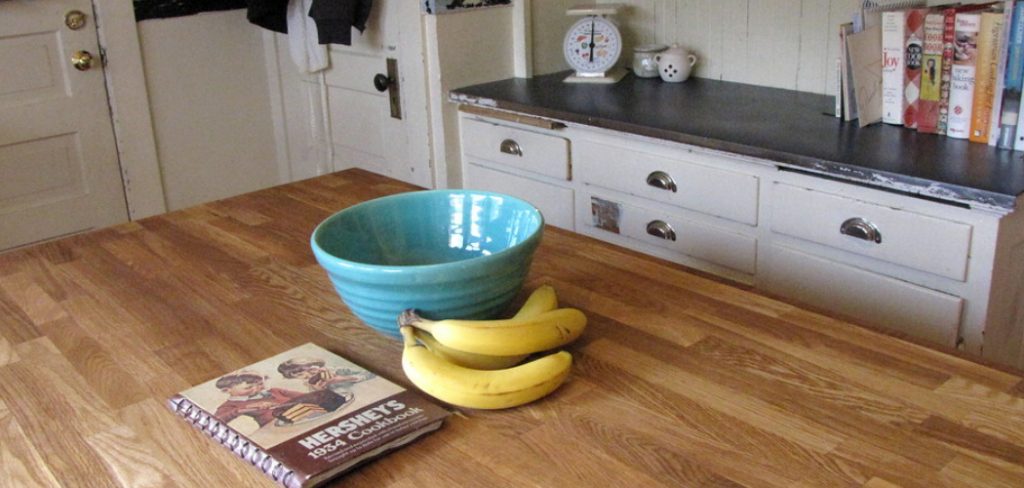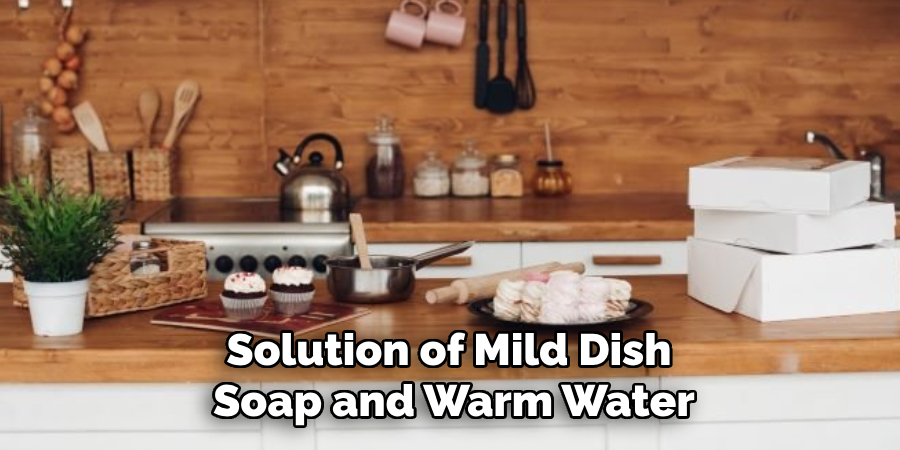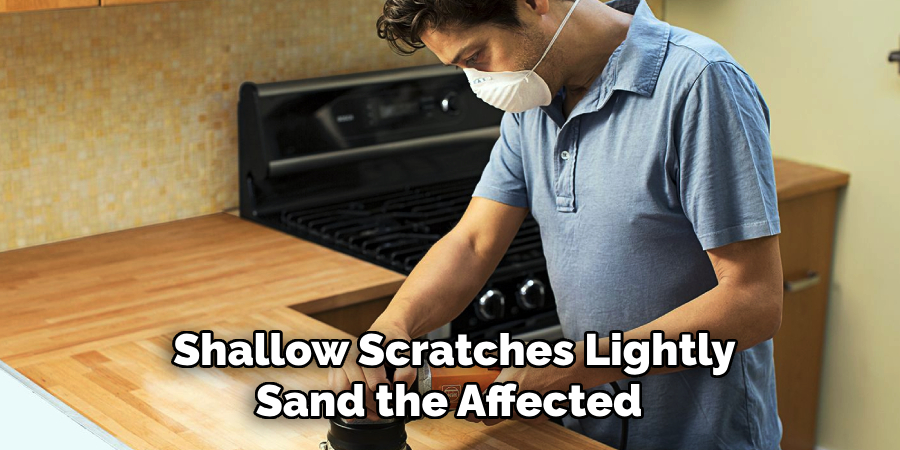Are you considering installing a butcher block countertop in your kitchen? These versatile and durable countertops provide a beautiful and functional addition to any home.

Caring for a butcher block countertop is essential to maintain its beauty, longevity, and functionality. These countertops, made from natural wood, bring warmth and charm to any kitchen, but they require regular maintenance to prevent damage and keep them in prime condition. Proper care involves cleaning, conditioning, and protecting the surface from moisture, stains, and scratches. Additionally, knowing how to use and maintain your butcher block countertop properly can ensure it lasts a lifetime.
In this guide on how to care for a butcher block countertop, we will discuss the necessary steps to keep your countertop looking its best for years to come.
What Are the Benefits of a Butcher Block Countertop?
Before diving into the care and maintenance, it’s essential to understand why butcher block countertops are an excellent choice for your kitchen. Here are some benefits of these countertops:
- Durability: Butcher block countertops are made from hardwoods such as maple, cherry, or oak, making them incredibly durable and able to withstand heavy use.
- Versatility: These countertops can be used for food preparation and as a dining or work surface.
- Affordability: Compared to countertop materials like quartz or granite, butcher block is relatively affordable.
- Eco-friendly: Since they’re made from sustainably-sourced wood, butcher block countertops are an eco-friendly choice for your kitchen.
- Classic and Warm Aesthetic: The natural wood grain and warm tones of butcher block bring a classic and inviting look to any kitchen.
What Will You Need?
Before we dive into the care and maintenance tips, here’s a list of essential items you’ll need to care for your butcher block countertop properly:
- Mild dish soap or specially-formulated butcher block cleaner: Avoid harsh chemicals or abrasive cleaners that can damage the wood.
- Soft cloth or sponge: You must use gentle materials when cleaning your countertop.
- Food-grade mineral oil or beeswax conditioner: These products help protect and nourish the wood and keep it from drying out.
- Cutting board: While butcher block countertops are durable, it’s best to use a cutting board when chopping food to prevent scratches on the surface.
Once you have these items, you can begin caring for your butcher block countertop.
9 Easy Steps on How to Care for a Butcher Block Countertop
Step 1: Clean the Surface

Start by wiping down the butcher block countertop with a damp cloth or sponge. Use mild dish soap or a specially-formulated butcher block cleaner to remove grease, food particles, or stains. Gently scrub the surface in circular motions, ensuring you reach every corner. Avoid using excessive water, as too much moisture can seep into the wood and lead to warping or cracking. Once the surface is clean, thoroughly dry it with a separate soft cloth. Regular cleaning helps maintain the countertop’s natural beauty and prevents bacteria from accumulating.
Step 2: Remove Stains and Discoloration
For stubborn stains or discoloration, sprinkle a small amount of baking soda onto the affected area. Add a few drops of water to create a paste, then use a soft cloth or sponge to scrub the spot in circular motions gently. Be careful not to scrub too hard to avoid damaging the wood’s surface. Once the stain is removed, wipe away any residue with a damp cloth and dry the area thoroughly. This method helps restore the countertop’s appearance without harsh chemicals.
Step 3: Apply a Protective Oil

To maintain the durability and luster of your wood countertop, regularly apply a food-safe mineral oil or wood conditioner. Start by ensuring the surface is clean and dry. Using a soft cloth, evenly apply a thin layer of the oil, following the wood grain. Allow the oil to penetrate the wood for several hours, or as recommended by the product instructions, and then wipe away any excess oil with a clean, dry cloth. This step nourishes the wood, prevents drying and cracking, and enhances its natural beauty.
Step 4: Sand and Refinish if Necessary
Over time, your wood countertop may develop scratches or show signs of wear. To restore its smooth surface, lightly sand the affected areas using fine-grit sandpaper, always following the direction of the wood grain. After sanding, wipe the surface with a damp cloth to remove any dust. Apply a fresh coat of food-safe mineral oil or wood conditioner as described in Step 3 to refinish the countertop and protect it from future damage. Regular maintenance ensures your countertop remains functional and visually appealing for years.
Step 5: Prevent Stains and Damage
To keep your wood countertop in optimal condition, it’s essential to prevent stains and damage. Always use cutting boards to avoid knife marks on the wood surface when preparing food. Wipe up spills immediately to prevent liquids from seeping into the wood and causing stains or swelling. Use trivets or heat-resistant pads to avoid burning or discoloring the countertop for hot pots and pans. By taking these precautions, you can maintain the durability and beauty of your wood countertop while extending its lifespan.
Step 6: Deep Clean Periodically

Even with regular maintenance, cleaning your wood countertop deep periodically is important to remove any buildup and ensure hygiene. Start by mixing a solution of mild dish soap and warm water, then use a soft sponge or cloth to scrub the surface gently. For tougher stains, sprinkle baking soda on the affected area and scrub lightly with a damp sponge. Rinse thoroughly with clean water and dry the surface with a clean towel. Avoid harsh chemicals or abrasive cleaners, as they can damage the wood. A deep clean every few weeks helps keep your countertop fresh, sanitary, and looking its best.
Step 7: Reapply Finish as Needed
To preserve the natural beauty and protect the surface of your wood countertop, it’s essential to reapply the finish periodically. Depending on the type of finish used—such as oil, wax, or polyurethane—this maintenance step can help maintain the countertop’s resistance to moisture, stains, and wear. Start by lightly sanding the surface with fine-grit sandpaper to remove any imperfections or old finish buildup. Then, clean off the sanding dust with a damp cloth and allow the surface to dry thoroughly.
Apply the new finish layer evenly, following the manufacturer’s instructions, and allow it to cure completely before using the countertop again. This practice ensures your wood countertop remains sealed, vibrant, and protected over time.
Step 8: Address Scratches and Dents

Over time, your wood countertop may develop minor scratches or dents from regular use. Fortunately, these blemishes can often be repaired with minimal effort. For shallow scratches, lightly sand the affected area with fine-grit sandpaper, blending it with the surrounding surface. Once smooth, clean the area and reapply the finish to restore protection. You can try using a damp cloth and a hot iron for deeper dents. Place the wet cloth over the dent and press the iron onto it briefly.
The heat and moisture will help the wood fibers expand and reduce the appearance of the dent. Repeat the process as necessary, allowing the wood to dry completely before sanding and refinishing. Regular care ensures minor wear and tear doesn’t diminish the beauty of your countertop.
Step 9: Prevent Water Damage
Water damage is one of the most common threats to wood countertops, but it can be avoided with proper precautions. Always wipe up spills immediately to prevent the wood from absorbing excess moisture. Use coasters, trivets, and cutting boards to protect the surface from water rings, heat, and knife marks. Additionally, periodically check for any cracks or gaps where water might seep in and address them promptly by filling them with wood filler or resealing them as needed. Keeping your countertop dry and well-maintained will preserve its functionality and appearance for years.
By following these steps and incorporating regular maintenance into your cleaning routine, you can ensure that your wood countertop remains a beautiful and functional addition to your kitchen for many years.
5 Things You Should Avoid
1. Cutting Directly on the Surface: Using knives directly on the butcher block countertop can lead to deep cuts and scratches that damage the surface. Always use a cutting board to protect the wood and maintain its longevity.
2. Allowing Water to Pool: Leaving water to sit on the surface can cause the wood to swell or warp over time. Wipe up spills immediately to prevent water damage and keep the countertop in good condition.
3. Using Harsh Chemicals: Harsh cleaning products can strip the finish and damage the wood fibers. Stick to mild soaps or specially designed wood cleaners to preserve the countertop’s integrity.
4. Ignoring Regular Oiling: Without regular oiling, the surface can dry out, crack, and become more susceptible to damage. Use food-grade mineral oil to maintain the countertop’s moisture and sheen.
5. Placing Hot Items Directly on the Countertop: Hot pans or pots can scorch the wood and leave permanent burn marks. Always use trivets or heat-resistant pads to protect the surface from heat damage.
Conclusion
Proper care and maintenance are essential to preserving the beauty and functionality of a butcher block countertop.
You can prevent unnecessary damage by avoiding common mistakes such as cutting directly on the surface, allowing water to pool, or using harsh chemicals. Regularly oiling the countertop and protecting it from heat will ensure its longevity. With consistent attention and care, your butcher block countertop can remain a durable and visually appealing centerpiece in your kitchen for many years.
Hopefully, the article on how to care for a butcher block countertop has provided you with valuable information and tips to keep your countertop looking its best. Now, go forth and enjoy the beauty and functionality of your butcher block countertop! Happy cooking!
Professional Focus
Angela Ervin, a former interior designer turned blogger, specializes in kitchen design and renovations. Through her website, she blends her passion for cooking with design expertise, sharing practical and creative ideas. Known for balancing functionality and beauty, Angela’s insightful content has made her a trusted voice in home design and lifestyle.
About the Author
Angela Ervin, an experienced interior designer and blogger, combines her passion for kitchen renovations with storytelling. Living in Petersburg with her family, she enjoys cooking and testing her projects firsthand. Known for her humor and relatable style, Angela shares creative, functional design insights through her content, making her a trusted voice in home design.
Education History
University: Virginia Commonwealth University
Degree: Bachelor of Fine Arts (BFA) in Interior Design
- Angela’s education at VCU focused on mastering core interior design principles, including spatial planning, color theory, materials selection, and sustainable design practices.
- She gained hands-on experience through studio projects and collaborative design exercises, which honed her ability to create functional and aesthetically pleasing environments.
- Her coursework also emphasized problem-solving and practical applications of design, preparing her for real-world projects like her self-directed kitchen renovations.
- The program’s strong foundation in both technical skills and creative expression shaped Angela’s ability to seamlessly integrate form and function in her work.
